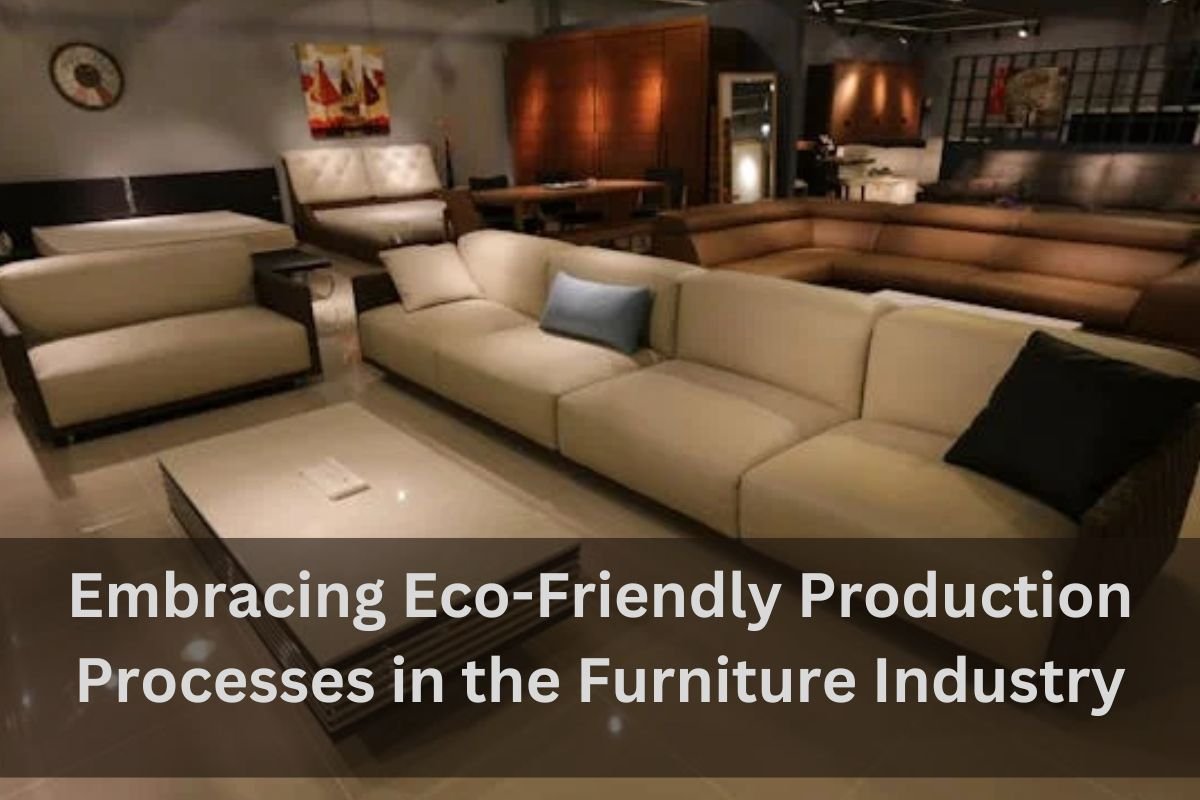
In an era where environmental concerns are at the forefront of consumers’ minds, the furniture industry is undergoing a transformative shift towards more sustainable practices. Eco-friendly production processes are not just a trend but a commitment to reducing the environmental impact of furniture manufacturing. This article delves into the significance of these green manufacturing techniques, their benefits, and how they are shaping the future of furniture production.
The Importance of Eco-Friendly Production Processes
The traditional furniture manufacturing process has often been criticized for its heavy environmental footprint, characterized by high energy consumption, substantial waste production, and the use of toxic materials. However, as awareness of environmental issues grows, so does the demand for products made in a way that respects the planet. Eco-friendly production processes aim to address these concerns by minimizing waste, reducing emissions, and conserving natural resources.
Key Aspects of Eco-Friendly Furniture Manufacturing
- Sustainable Sourcing: This involves selecting materials that are renewable, recyclable, or biodegradable. Sustainable sourcing also means ensuring that materials such as wood come from responsibly managed forests certified by organizations like the Forest Stewardship Council (FSC).
- Reducing Carbon Footprint: Manufacturers are adopting renewable energy sources, such as solar or wind power, to run their operations. Additionally, optimizing production layouts and processes to be more energy-efficient plays a crucial role in lowering carbon emissions.
- Minimizing Waste: Through lean manufacturing techniques, companies are striving to reduce the amount of waste generated during production. This includes reusing scrap materials, recycling waste products, and designing furniture with minimal waste in mind.
- Non-Toxic Materials and Finishes: Moving away from harmful chemicals and volatile organic compounds (VOCs) in glues, paints, and finishes, the industry is turning to natural, non-toxic alternatives that are safer for both the environment and human health.
- Water Conservation: Implementing water-saving techniques in the manufacturing process, such as recycling water used for cooling or dyeing, significantly reduces the water footprint of furniture production.
Benefits of Eco-Friendly Production Processes
- Environmental Impact: The most obvious benefit is the reduced environmental footprint, contributing to the conservation of ecosystems and biodiversity.
- Health and Safety: By avoiding toxic chemicals, eco-friendly furniture is safer for both the workers involved in its production and the end consumers.
- Economic Efficiency: Although some green practices may require upfront investment, they can lead to significant cost savings in the long run through reduced energy and material costs.
- Brand Image and Consumer Demand: Companies that adopt eco-friendly practices often enjoy a positive brand image, meeting the growing consumer demand for sustainable products and potentially tapping into new markets.
The Future of Furniture Production
Innovative technologies and materials are continually emerging, pushing the boundaries of what’s possible in eco-friendly furniture manufacturing. From 3D printing using recycled materials to the development of biodegradable composites, the future looks promising for sustainable furniture production. Moreover, as regulations on environmental protection become stricter, adopting green practices will not only be beneficial but essential for businesses to thrive.
Embracing the Green Revolution
Consumers play a pivotal role in this transition by choosing furniture from brands that prioritize eco-friendly production processes. As awareness and demand for sustainable products grow, the furniture industry is motivated to invest in green technologies and practices, driving a significant positive impact on the environment.
Conclusion
The shift towards eco-friendly production processes in the furniture industry reflects a broader movement towards sustainability. By prioritizing the health of the planet and its inhabitants, manufacturers are not only addressing the environmental challenges of our time but also setting a new standard for quality and responsibility in the furniture industry. As consumers, supporting these initiatives can help ensure a greener future, proving that beautiful, high-quality furniture can go hand-in-hand with environmental stewardship.
